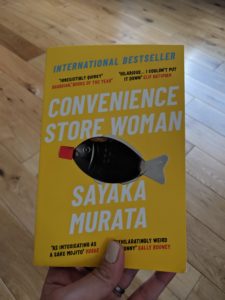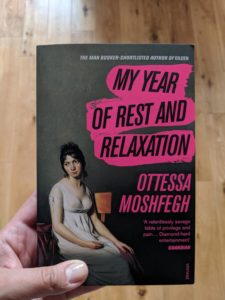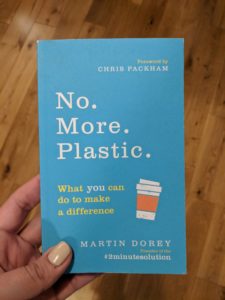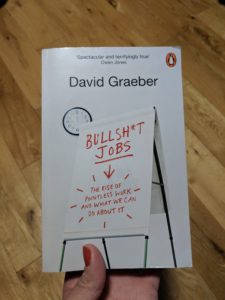How to Be a Footballer by Peter Crouch
Written by Ashley Kelmore, Posted in Reviews
Four Stars
Best for:
People who enjoying playing or watching football, especially the men’s game, especially the English Premier League.
In a nutshell:
Professional football (soccer) player Peter Crouch offers a glimpse into the lives of professional players, including what goes on in the changing rooms, what it’s like to be traded (sold) to another team, and why so many seem to buy such … interesting cars.
Worth quoting:
“You should probably be able to absorb the pain of an opposition goal without needing to wave two finders in the scorer’s face…We all like goals. And if it’s a goal you personally do not like, you can be certain that someone with the same primary leisure interest as you will be absolutely loving it.”
Why I chose it:
I like a good football (soccer) biography, and this one had the potential to be especially entertaining.
Review:
What a lovely surprise this book was! I love football (or, as I grew up calling it, soccer). I’ve played since I was a kid, and last year joined a women’s league here in London, so I train every Tuesday (and one Friday a month), and play in matches on Sundays (and some Saturdays) from September through April. It’s a lovely camaraderie as well as a way to stay fit and keep my brain going as I try to improve. I’m also going to the Women’s World Cup (tomorrow!), where I’ll watch the US Women’s National Team play each of their group stage matches, and then return for the semi-finals and finals.
I have read and reviewed a couple autobiographies from players for the US Women’s National Team, but they were fairly straightforward sports bios, whereas this one is more a collection of humorous observational essays. And, because I didn’t grow up watching the England men’s premier league (or much men’s international football at all), there are a lot of references that I don’t get. However, that didn’t take a way from the book. Sure, there are a lot of players and moments (say, an amazing goal) that are mentioned, but there is enough context within each chapter to get the general gist.
Crouch played for a few teams in the English men’s premier league, as well as for England’s men’s national team. You might recognize him as the extraordinarily tall, very lean, striker. Seriously, the guy is 6’7”. Damn. He currently plays for Burnley, and has played for Aston Villa, QPR and Liverpool in the past. But this book isn’t so much about that. I mean, it is – he talks about his experiences working under different managers, and traveling with different teams. But each chapter is about a different aspect of a footballer’s life, and it doesn’t follow any traditional trajectory. Any given chapter might refer to his time in the youth league, or at a World Cup. He doesn’t talk much about his wife or kids — this is a book about football.
And it’s funny! I don’t know how better to put it than that. Yes, I think you need to have a passing interest in the sport, but Crouch is a genuinely endearing, funny guy who can make an already entertaining story even better. He’s just the right amount of self-deprecating, and he’s also willing to point out when he thinks something is just silly.
I mean, come on:
The only bummer for me is that at no point are any of his examples of amazing plays or players women. Yes, obviously he’s played only with men, and only in men’s leagues. But he doesn’t limit his anecdotes to just things he’s directly experienced or people he has played with; he references loads of players and moments that took place before he was playing. Is there really no goal a professional woman footballer has scored that is worth a mention? Not Carli Lloyd’s hat trick at the World Cup Final in 2015? Not Abby Wambach’s headers? It’s just disappointing.
Still, I recommend this book if you like football and you like to laugh.
Keep it / Pass to a Friend / Donate it / Toss it:
Pass to a friend










